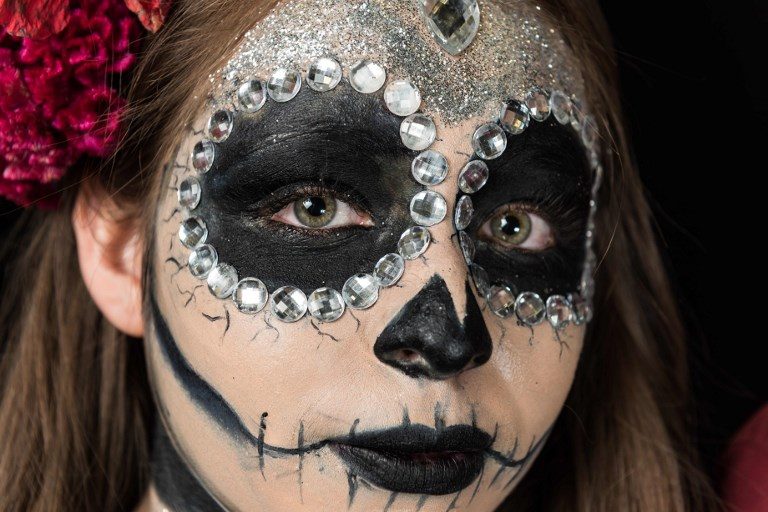SUMMARY
This is AI generated summarization, which may have errors. For context, always refer to the full article.

MEXICO CITY, Mexico – Mexico’s Day of the Dead is a festival of colorful costumes, traditions and sweets, but it has a bittersweet flavor this year as the country remembers those killed in two earthquakes and a wave of violent crime.
The celebration, which has its roots in ancient Aztec customs, is an occasion for Mexicans to remember their departed loved ones.
But for many families, the memories are all too fresh in 2017.
The year has been marked by two powerful earthquakes that killed 465 people in September, as well as a new surge in the already-horrific murder rate that has put Mexico on track to make 2017 its deadliest year.
The exuberant parades, skull-shaped candies and bright marigolds that mark the holiday – the first two days of November – jar with the still-raw trauma of the deadly quakes and a drug war that has left a trail of mutilated bodies and mass graves in its wake.
Mario Vergara is one of those who says he doesn’t feel like celebrating.
Last week, as officials in Morelia held a press conference to beckon tourists to the western city’s elaborate Day of the Dead festivities, Vergara silently protested with a sign demanding to know what happened to his missing brother.
His brother Tomas is one of 30,000 people who have disappeared in Mexico since the government declared war on the country’s powerful drug cartels in 2006.
Nearly 200,000 more have been murdered – including more than 18,500 so far this year.
Tomas Vergara was kidnapped in 2012. His brother, who comes from the troubled southern state of Guerrero, has been looking for him in the unmarked graves that litter the Mexican countryside.
“I think this Day of the Dead business is horrific,” said Vergara, 42, as the city readied its traditional parade of skeletons and skulls.
“Our loved ones were abducted and ended up as actual skulls,” he told AFP.
“It’s our tradition… but for the families of the ‘disappeared,’ it’s horrible.”
Laughing at death?
In many places, people respond to death with black clothes and somber mourning. Day of the Dead is about celebrating your loved ones and reviving a physical sense of their presence in your life.
Some Mexicans believe the dead come back for the day.
Many create elaborate altars for their late family members, decorating them with flowers, colorful paper cutouts and things the person loved.
In the village of Pomuch, indigenous Mayans even dig up their relatives’ bones and lovingly wash them.
It’s often said Day of the Dead is about laughing at death.
Mexicans are known for their black humor about death, summed up by the holiday’s most famous symbol: “Catrina,” a skeleton decked out in swank Victorian clothes who was created by cartoonist Jose Guadalupe Posada (1852-1913) as a spoof of Mexican aristocrats’ pretentious imitation of European ways.
Today, Catrina and her extravagant threads are imitated in countless Day of the Dead costumes each year.
But anthropologist Jose Mendozal rejects the idea that death is less traumatic for Mexicans than anyone else.
If Mexicans are laughing at death, it’s more like nervous laughter, he said.
“It’s one thing to look at a caricature of death, it’s another thing to see a dead body, and another thing still to see the skeleton of someone who was violently murdered,” he told AFP.
The fine line between joy and mourning is all the more delicate this year.
Mexico City’s government seemed aware of that in organizing the city’s Day of the Dead parade, a new event that the capital began putting on last year after a fictional version proved to be a smash hit in the opening scene of the James Bond movie “Spectre.”
This year, the parade was as boisterous and lavish as in the movie — but opened and closed with rescue workers marching in solemn tribute to the victims of the September earthquakes.
“Mexico City deserves a little joy. Little by little, we are rising up again,” said parade organizer Paula Schlaepfer.
But she added: “We’re determined to pay tribute (to the victims). It shouldn’t just be a party.” – Rappler.com
Add a comment
How does this make you feel?
There are no comments yet. Add your comment to start the conversation.